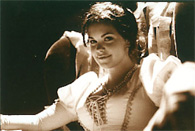
| Saturn Will Not Sleep - Discovery (Official Video) |

|
| home | movie reviews | features | sov horror | about | forum |
The Yellow Sign B+
Year Released: 2001
Francis Coppola once speculated that filmmaking would only transcend the commercial when an eight-year-old could take a home video camera and create a masterpiece. A movie like The Yellow Sign makes you believe that such a thing is possible. It uses only the most basic tools, shot in digital format and edited on a G4 computer that can be found in any suburban home. Yet its inherent sense of mood and style speaks to a high quality of filmmaking, and it carries a weight that most feature films might envy. A creepy exercise in existentialist fantasy, it understands its technological limits while refusing to be bound by them. Director Aaron Vanek approaches his subject carefully. The Yellow Sign speaks of alien vistas, shared visions, and of a world not quite outside our own. Mainstream Hollywood would just throw a special effects crew at the notion, but Vanek conjures the desired tone with little more than a few sparse sets and a pair of actors. The atmosphere comes gradually into focus through the interactions of cryptic painter Aubrey Scott (Dale Snowberger) and his model Tess Reardon (Shawna Waldron), whom he may or may not have met somewhere... else. Tess has dreams of another time and place: strange parties, vague dangers and a symbol that potentially holds the key to a different plane of existence. They haunt her more than she lets on, and Scott seems to know a great deal about them: his material speaks of similar visions, and indeed when she goes to see him, he hints at a prior relationship that she has no memory of. So she agrees to pose for him, hoping almost subconsciously that he can provide some answers. Though the story involves a large and complex mythology, The Yellow Sign has enough sense to keep it simple. The background details come crisp and brief, leaving superfluous information to our imagination. It doesn't push too hard on the specifics, but gives us just enough to let our minds fill in the blanks. The result is thoughtful and unsettling without resorting to quick-fix scares. Vanek channels the film's energy with a lot of poise, building the tension slowly and deliberately. The menace appears at the edges of the characters' sight, tugging at their minds rather than rushing them head-on. The Yellow Sign also benefits from a relatively brief run time, allowing the tension to permeate without overstaying its welcome. That tension becomes all the more impressive because it requires a straight face. Without a deadly serious approach, the film could have easily turned into an unintentional gigglefest. Horror movies all too quickly reach for the Scream model, using jokes to cover up shoddy production values and bogus scares. You can sense how fragile The Yellow Sign's mood is, how quickly it could descend into camp or worse. But Vanek has his wits about him at all times, and the cast clearly respects the material enough to keep their tongues out of their cheeks. The script by John Tynes is dramatic without inviting ridicule, and grounds the otherworldly elements with natural and very believable dialogue. Only the climax stumbles, as the film's low-budget reach finally exceeds its grasp. But it recovers nicely with a creepy denouement that lingers in the mind as the final credits roll. I came back to this film a week or so ago after seeing a much bigger movie about signs; the similarities between the two are more striking than they first appear. Both hearken back to the smoke and mirrors era of filmmaking, relying on technique rather than spectacle to affect the audience. The Yellow Sign is all the more impressive for its humble origins, demonstrating that deep pockets matter far less than the talents involved. Because of its nature, it has struggled to find proper distribution. It runs a tight 45 minutes -- too brief for feature status, too lengthy for consideration as a short film -- and may never get the exposure it deserves. But there are good things at work here, and those willing to do a little searching will find in it a quiet gem that rewards such extra effort. Keep an eye out for it; you won't be disappointed. Review published 08.12.2002.
|

|
| home | movie reviews | features | sov horror | about | forum |
| This site was previously at flipsidemovies.com from 2000 to 2008. |
|
contact | copyright | privacy | links | sitemap
Flipside Movie Emporium (FlipsideArchive.com)
|